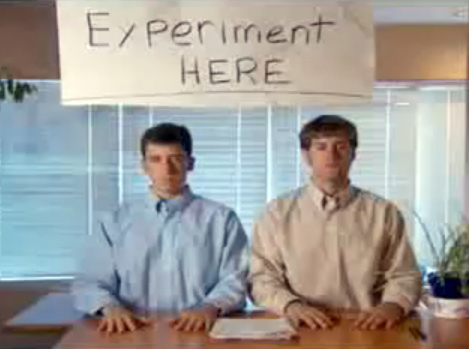Depending on what we focus on, our brains can be completely blind to obvious changes going on around us. This is called “change blindness,” and it is unnerving when you observe it. Below are a few examples of this in action.
This first video is an experiment conducted at Harvard where 75% of the people in the test don’t notice that the man in front of them has turned into a different person. This was conducted in a formal test setting. The people involved were interviewed after the experiment to better understand their perception of events.
This next video shows change blindness being used as more of a parlor trick. Magician Derren Brown exploits this blind spot in a much more dramatic way. Changing clothes, race, and gender doesn’t seem to matter to these people on the street. This demonstration isn’t as controlled, but is a lot of fun to watch.
The last video is an “Awareness Test” that has been around for a while. You can run this test on yourself and on others.
The concept of change blindness highlights a potential problem for UX professionals. Most of the time, user researchers and UX architects begin their research with specific goals in mind, and are focused on a specific aspect of the product. But with this focus comes the risk that they will be blind to other aspects of the user’s experience. What are we failing to capture when observing people using the products we design? We need to reserve space in our work for uncovering those things that we don’t know we don’t know, and make it an official part of the process. We will observe more of the moonwalking bears that teach us valuable lessons about our users and our products.








